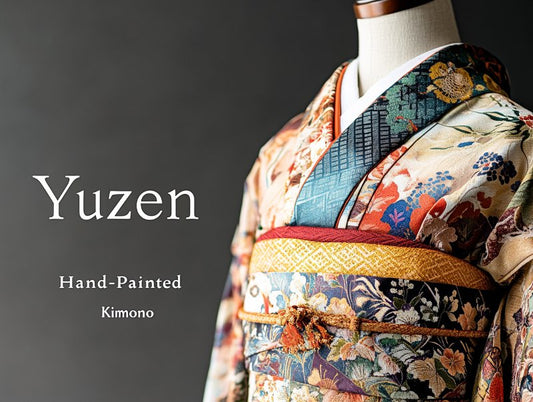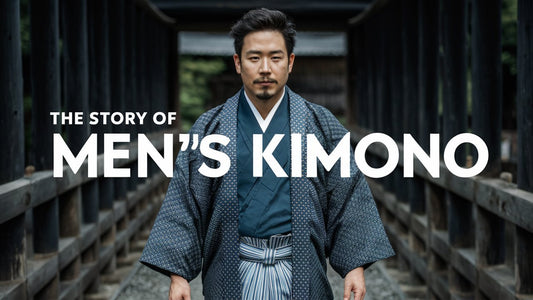
Tomesode Kimonos: Elegance in Formal Japanese Attire
Share
Introduction
In the rich tapestry of Japanese traditional clothing, the tomesode stands as an epitome of formality and refinement. With its history, design, and usage deeply rooted in cultural ceremonies, the tomesode is a garment that tells tales of traditions, ceremonies, and familial ties.
1. Historical Roots of the Tomesode
Originating from the Edo period, the tomesode evolved from the kosode, the forerunner to all modern kimonos. It emerged as the preferred formal wear for married women, reflecting their status and role in social ceremonies.

2. Identifying Features
The tomesode is distinguishable from other kimonos mainly by its patterns. While most kimonos can have designs scattered across the garment, tomesode patterns are primarily located below the waist. They often feature scenic views, with elements like pine trees, bamboo, plum blossoms, or scenes from traditional Japanese tales.

A woman wearing an elegant kuro-tomesode
There are two types of tomesode: Kuro-tomesode and Iro-tomesode. The former is black with multi-colored patterns, while the latter can be any color but often has simpler patterns.
3. Occasions for the Tomesode
The tomesode is the most formal kimono for married women and is typically worn by close relatives of the bride or groom at weddings. It can also be seen at significant anniversaries and other major family ceremonies.

A traditional Japanese Tomesode
4. Modern Day Relevance
While the tomesode remains a preferred attire for formal occasions, modern interpretations have seen a blend of traditional motifs with contemporary designs. The commitment to preserving its essence while adapting to contemporary fashion sensibilities ensures that the tomesode remains a cherished garment.
Conclusion
The tomesode is more than just a piece of clothing; it's a narrative of marital status, familial honor, and Japanese heritage. In every thread, pattern, and color, it speaks volumes about the country's deep-rooted respect for tradition, aesthetics, and societal roles.
Be sure to learn about all the different styles of kimonos here.


